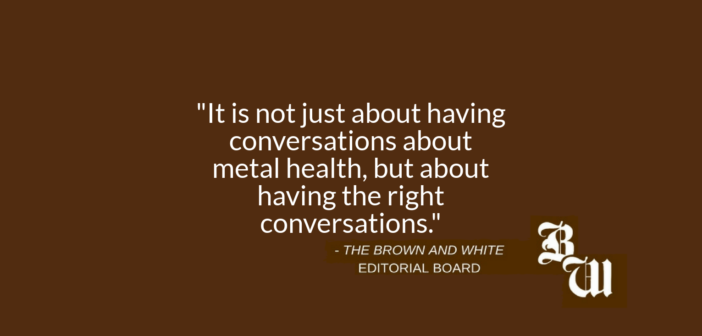Do we walk a fine line between awareness and invalidity?
Discussion surrounding poor mental health has skyrocketed in the last decade, positively resulting in increased awareness and treatment options for those whose lives are negatively impacted by mental illness.
We have grown up on the tail end of a generation of silence where veterans of the Vietnam War were often shamed over the unacknowledged, but real, concept of post-traumatic stress disorder. Mental illness as a whole was generally dismissed as a weakness, not an illness.
As a society, we have grown immeasurably in terms of our tolerance to discuss mental health and have become more open to discussing these difficult topics. To contrast, the extreme awareness surrounding mental health problems has led to a growing trend, specifically pertaining to the glorification of anxiety and depression.
Millennials have been referred to as “the most anxious generation.” It is easy to attest to this growing sense of anxiety to the mere connectivity that today’s youth exists within. There is no doubt that the constant comparison culture created by social media and never-ending access to the internet contributes to individuals’ anxiety, but to what extent?
The issue stems from more than just being a technology-addicted generation. We live in a time where anxiety is “trendy,” where the concept has become so glorified that social media and fashion brands have capitalized off of the struggles of others. Awareness is so heightened that it seems there are more anxious people than not. This is not an attempt to devalue the mental health struggles faced widely by today’s youth, but to open conversation in an attempt to confront very crucial questions:
Does the glorification of mental illness result in a lack of validity for those whose mental illnesses are potentially life-threatening? If we’re all so anxious, what makes one individual’s anxiety more serious than another?
This mindset has the potential to provide extremely detrimental results. Amidst a trend of anxiety and depression, it has become common for youth, specifically high school and college students, to invalidate their symptoms and feelings.
A recent Lehigh InSTALLment, the monthly newsletter hung inside every on-campus bathroom, reported that the top impediment to academic success at Lehigh is stress, followed second by anxiety.
The InSTALLment led to a follow-up issue specifically focused on mental health among Lehigh students. Statistics in the newsletter, collected from the American College Health Association, report that in the last year almost 42 percent of college students felt depressed and almost 64 percent experienced overwhelming anxiety.
The already grim statistics go a step further as research shows that two-thirds of students who face severe anxiety and depression symptoms choose not to seek help.
This mass awareness has perpetuated another culture of silence, different from the generations before us faced, but one that presents a new host of challenges and discussions to be had.
While awareness of general anxiety increases, it is essential not to lose sight of the life-threatening severity that some forms of anxiety and depression can take. Due to its prevalence, it is easy to generalize mental illnesses as the same, despite the drastically different impacts that each one can take.
It is not just about having conversations about metal health, but about having the right conversations.
We are toeing the line between increasing awareness and de-legitimizing mental health issues as illnesses that require professional medical treatment. This is proven through the lack of medial resources allocated for those who are mentally ill, such as insurance companies that remain hesitant to allow patients to use their insurance on mental health services and doctors that are hesitant to treat mentally ill patients with medication.
Lehigh is not exempt to the overwhelming presence of anxiety and poor mental health among college students. While Lehigh provides a multitude of professional counselors, trained to help students through these issues, due to a high demand for appointments, Lehigh students are limited to six to eight appointments before they are recommended to seek help elsewhere.
While understandable that Lehigh aims to serve as many students’ needs as possible, it is representative of a much larger issue — there are more students in need than there are available resources. Given how statistically unlikely it is for students to seek help, even on campus, it is increasingly unlikely that students will pursue services off-campus.
Otherwise, Lehigh has taken many positive strides in the conversation. Aside from just creating awareness, Lehigh has created a call to action, promoting students to seek help and report on behalf of friends whose lives seem to be at serious threat due to mental health.
Ultimately, the prevalence of this discussion has resulted in more of a positive shift than not. The changing societal discussion is that we do not need to accept this as normal and that despite an increasing number of suffering individuals, mental illness is not something we can glorify as a trend or accept as the status quo. There are steps that can be taken to increase treatment opportunities and ensure that our generation understands mental illness as something that is tangible and treatable, here at Lehigh and beyond.






Comment policy
Comments posted to The Brown and White website are reviewed by a moderator before being approved. Incendiary speech or harassing language, including comments targeted at individuals, may be deemed unacceptable and not published. Spam and other soliciting will also be declined.
The Brown and White also reserves the right to not publish entirely anonymous comments.